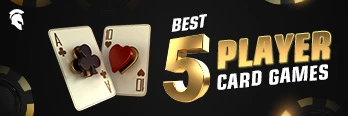How Many Kings are in a Deck of Cards?
For centuries, people have employed a normal deck of playing cards as a fascinating and adaptable set for games, amusement, and even fortune-telling.
This 52-card deck, which at first glance appears straightforward, has a fascinating history spanning several cultures and eras. Its design and meaning changed as it moved from the East to the West.
Since the deck was standardized in Europe, its composition has mainly not changed. It is composed of four suits: Hearts, Diamonds, Clubs, and Spades.
Each suit comprises three face cards (Jack, Queen, and King) plus a unique set of numbered cards. The Kings are unique among these many cards, valuable in terms of gameplay as well as cultural significance.
Every King card is more than just a prominent position in a game; it is a representation rich in artistic interpretation, historical significance, and symbolic value.
The Kings have been portrayed in a variety of ways, each one symbolizing important historical and mythological characters with a distinct backstory and set of characteristics.
This blog explores the history, design progression, and rich significance of the Kings in a deck of cards. It goes deeper into the minutiae of these cards.
We will also examine the roles that these Kings play in a variety of card games, ranging from the lonely trials of Solitaire to the strategic complexities of Rummy and Poker.
The Composition of a Standard Deck of Cards
Prior to getting into the intricacies of the Kings, it is imperative that we comprehend the elements that make up a typical deck of cards. A standard deck has 52 cards that are split up into four suits:
- Hearts
- Diamonds
- Clubs
- Spades
Each suit contains 13 cards: Ace, 2 through 10, and the three face cards - Jack, Queen, and King. Therefore, there are four Kings in a standard deck, one in each suit.
The Four Kings
- King of Hearts
- King of Diamonds
- King of Clubs
- King of Spades
History of the Deck of Cards
The deck of cards has a vast and complex history that crosses centuries and continents, illustrating the changes in society values, art, and culture. Playing cards have its roots in the Tang Dynasty (618–907) of ancient China, when they were first employed for gaming and recreation.
After then, these early cards travelled to India and Persia via trade routes, where their use and design rapidly changed. Playing cards arrived in Europe by the fourteenth century, perhaps via contacts with the Islamic world, where Mamluk card games were well-liked.
Originally, European cards used the Mamluk design, which included suits of coins, swords, cups, and polo sticks. But as card games spread throughout Europe, regional variations appeared, with France being a key player in standardizing the deck.
The now-familiar suits of hearts, diamonds, clubs, and spades were created by the French during the late 15th century. Because of the symbols' simplicity, mass manufacture was made easier.
The current 52-card deck was inspired by this French design. A cross-cultural practice that gave the face cards, especially the Kings, a layer of narrative complexity emerged as they started to be linked to historical and legendary characters.
Playing cards developed over the ages, absorbing local creative and cultural components to create the wide variety of decks that are available today.
Playing cards have always been popular because of their adaptability and usefulness in games and amusement, as well as because they are cultural relics that shed light on the communities who invented and utilized them.
Historical Background of the Kings Card
With roots in ancient China, India, and Persia, playing cards have undergone centuries of evolution in both structure and design. The earliest known playing cards were very different from the conventional decks we use today.
They date back to the Tang Dynasty (618–907) in China. Over time, these cards made their way to India and Persia, where they underwent more refinement and were incorporated into a variety of regional customs and games.
These cards saw substantial changes as they travelled through trade networks to reach Europe in the fourteenth century. The current 52-card deck originated in Europe, where the social and political climate of the era had a significant impact.
European royalty and court life had a special influence on the face cards, which included the Kings and represented the era's notable individuals and hierarchical systems.
While every European nation created its own versions of playing cards, the French were eventually responsible for standardizing the images that are best known to people today.
The Jack, Queen, and King face cards are the three face cards that make up each of the four suits—Hearts, Diamonds, Clubs, and Spades—that were first introduced by the French.
The intricate regalia worn by the Kings, who were frequently fashioned after real-life or mythological kings, represented nobility, strength, and authority.
Also Read - Detailed Information on Face Cards
The Historical Figures Behind the Kings
In traditional French playing cards, each King was associated with a specific historical or legendary figure:
- King of Hearts - Charlemagne (Charles the Great)
- King of Diamonds - Julius Caesar
- King of Clubs - Alexander the Great
- King of Spades - King David of Israel
These associations were not universally adopted but became a part of card lore over time.
How many Kings are there in a Deck of Cards?
When examining the number of Kings in a deck of cards, it's important to consider the various versions and historical contexts of card decks.
Typically, a conventional deck comprises 52 cards, which are categorized into four suits: hearts (♥), diamonds (♦), clubs (♣), and spades (♠). Each of these suits includes one King, resulting in a total of four Kings in a standard deck.
Symbolism and Iconography of the Kings in a Card Deck
1. King of Hearts
Because of the artwork that shows the King of Hearts appearing to stab himself in the head, he is frequently referred to as the "Suicide King".
This representation is not a reflection of any actual historical act, but rather the result of decades of design growth. The King of Hearts is connected symbolically to:
- Charlemagne: A symbol of courage, leadership, and insight.
- Heart Suit: A representation of emotion, love, and compassion.
2. King of Diamonds
Because of his connections to wealth and trade, the King of Diamonds is also known as the "Rich King" at times. In symbolism, the King of Diamonds stands for:
- Julius Caesar: A symbol of riches, power, and dominance.
- Diamond suit: A symbol of success, ambition, and material wealth.
3. King of Clubs
The King of Clubs is revered as a military genius and strategic figurehead. In symbolic terms, this King stands for:
- Alexander the Great: The embodiment of strategy, conquest, and military might.
- Club Suit: Stands for development, imagination, and initiative.
4. King of Spades
The King of Spades is seen to be a wise and powerful dictator. In symbolic terms, this King stands for:
- King David: A symbol of discernment, morality, and heavenly might.
- Spade suit: A symbol of power, action, and intelligence.
Deck Variations
1. Collectible Decks
Collectors frequently look for unusual and beautifully crafted decks, with the Kings sometimes being especially eye-catching. The attractiveness of limited-edition decks is increased by the possibility of Kings with ornate artwork or themes.
2. Custom Decks
There are custom decks that have Kings with non-traditional designs. These decks may incorporate themes from mythology, pop culture, or individual artists.
3. Oracle and Tarot Decks
Kings are among the court cards in each suit and have many interpretations in Tarot decks. They stand for power, proficiency, and the apex of the suit's attributes.
The Art of Cardistry and Magic
Cardistry
The performance art of card flourishing, or cardistry, involves complex maneuvers and displays performed with a deck of cards. With their lavish costumes, kings frequently take center stage in spectacular visual productions.
Magic
Kings are commonly employed in magic tricks because of their tremendous visibility and recognition. Kings can be used by magicians for a wide range of tricks, such as card transformations and seemingly hard sleight of hand feats.
The four Kings that appear in a conventional deck of cards represent history, power, and artistic expression rather than merely being game elements.
Kings are significant in the realm of playing cards, from their beginnings and evolution to their roles in numerous games and magic. Knowing the history and meaning of a deck of cards enhances the experience of utilizing it for performance art, collecting, or play.
The Role of Kings in Card Games
1. Poker
Only Aces are higher in the majority of poker varieties, making Kings the highest-ranking cards. Kings can create strong hands, especially when they form full houses or in pairs (a pair of Kings is referred to as "Cowboys").
2. Bridge
Kings are useful high cards in bridge for creating winning tactics. They can win tricks and aid in suit control.
3. Rummy
Kings can be used to build runs or sets in rummy. Their high worth can make a big difference in the player's point total.
Other Games
While the Kings are used differently in different card games, most games have an emphasis on their great value and strategic significance.
The next time you pick up a deck of cards, consider the rich history and symbolism represented by the Kings. Besides being the high-ranking cards as they are, they are also a monument to centuries of human ingenuity, culture, and storytelling.









